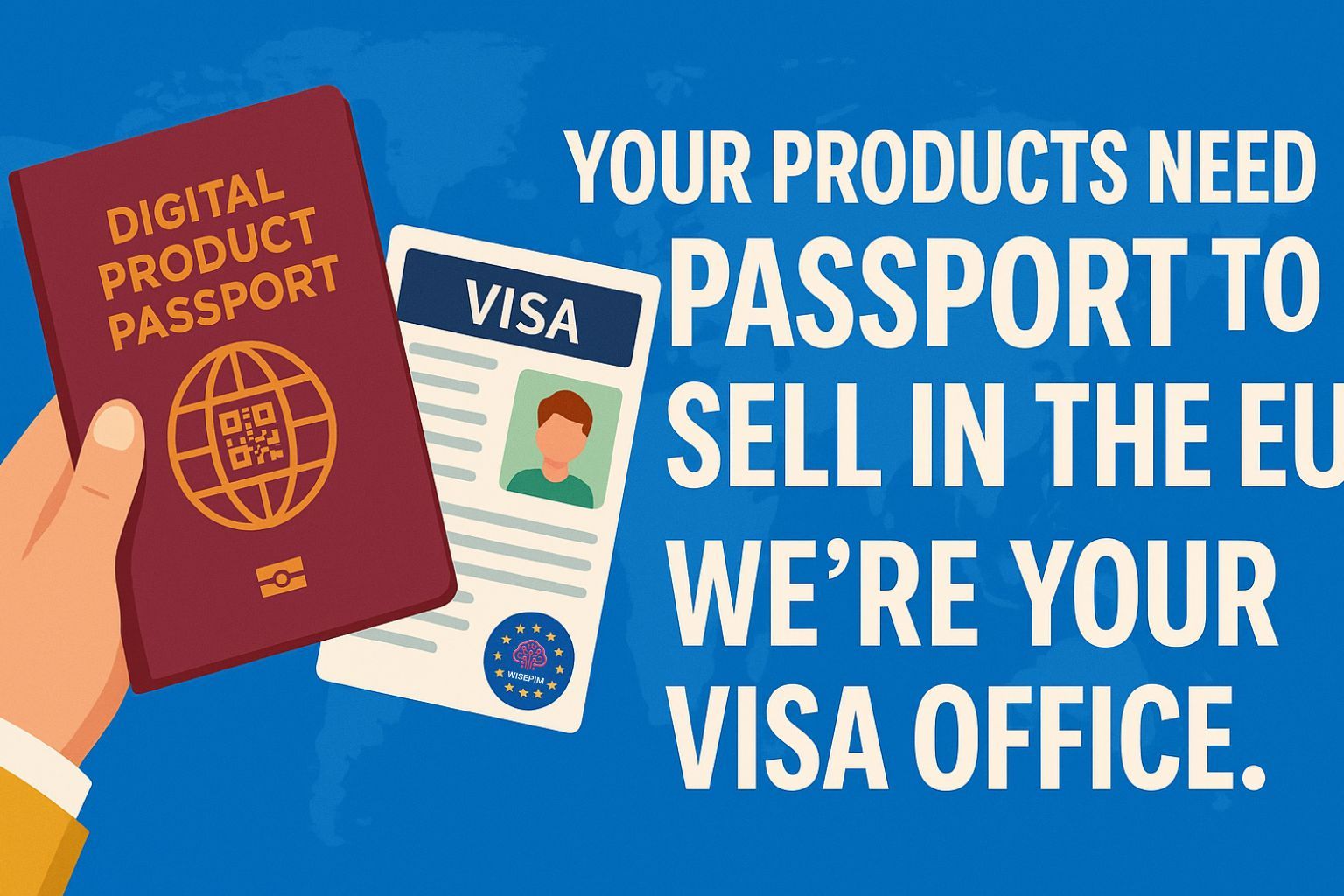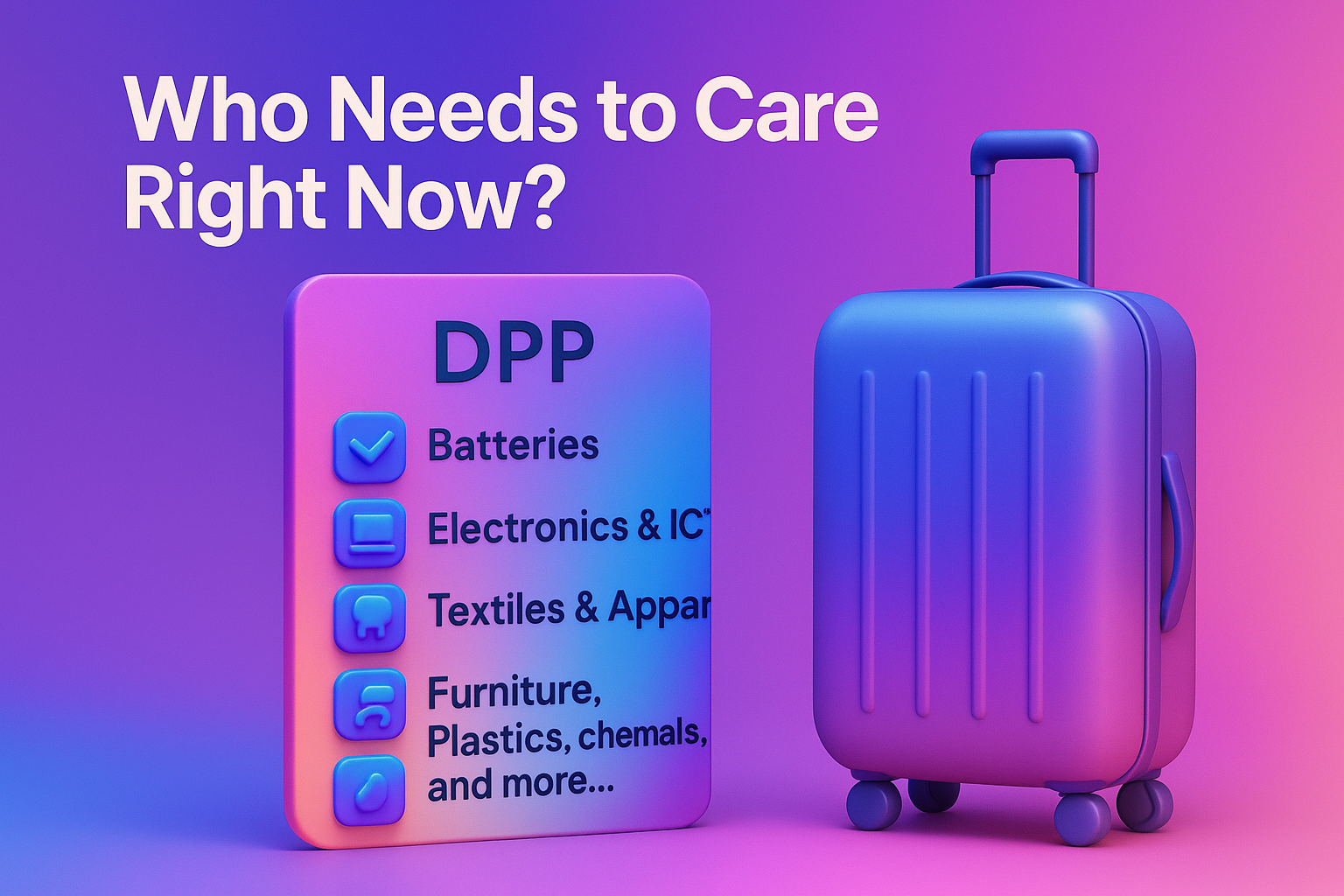The 2025 Guide to the EU Digital Product Passport (DPP) for E-commerce.
In 2025, every product tells a story. The EU's Digital Product Passport makes it official. Find out how to easily manage the data, get your products approved, and sail through the new digital border control.

Your Products Are About to Get a Passport. Are You Ready for Border Control? 🛂
Imagine every single product you sell needs its own passport. Not for a fun holiday, but to travel from your warehouse to your customer's shopping cart. It needs to show where it came from, what it’s made of, and what its plans are for the future (a.k.a. recycling).
Sounds a bit like sci-fi, right? Well, it’s not. It’s called the Digital Product Passport (DPP), and it's the EU's next big step in creating a more sustainable and transparent market.
And yes, it’s coming for the e-commerce world. Before you start hyperventilating into a recyclable paper bag, let’s break down what this actually means and why it might just be the best thing to happen to your product data since… well, ever.
So, What Exactly IS a Digital Product Passport?
Think of the DPP as a product's digital resumé. It’s a data set linked to a product via a QR code or similar tag that tells its entire life story. We're talking about:
- Origin Story: Where the raw materials came from.
- Composition: What it’s made of (hello, recycled plastics!).
- User Manual: Instructions for use, repair, and disassembly.
- End-of-Life Plan: How to properly recycle or dispose of it.
- Carbon Footprint: The environmental impact of its creation and journey.
It’s a birth certificate, owner's manual, and recycling guide all rolled into one neat, scannable package. The goal is to empower consumers to make greener choices and push the industry toward a circular economy.

"But I Sell Hoodies, Not Cars!" - Who Needs to Care Right Now?
Okay, let's be real. You're wondering if this applies to your business.
As of right now, July 2025, the DPP rollout has already begun. The first wave is focused on industries with a big environmental footprint. The guest list includes:
- Batteries (they’re already packing their bags!)
- Electronics & ICT
- Textiles & Apparel
- Furniture
- Plastics, chemicals, and more...
If you sell products in any of these categories, this is your heads-up. The DPP is no longer a "someday" problem; it's a "soon" reality. While the exact dates for each category are still being finalized, the direction of travel is crystal clear. The data infrastructure you build today will save you from absolute chaos tomorrow.
Your PIM Isn't Just for Marketing Anymore... It's Your DPP Command Center.
So where on earth are you supposed to store, manage, and share all this new data? You can already picture the intern weeping over a 50,000-row spreadsheet of doom, and it's not a pretty sight.
This is where your PIM transforms from a marketing tool into your mission-critical DPP Command Center.
The DPP is a hungry, hungry hippo for data. It needs details from your suppliers, your logistics team, and your product designers. Trying to manage that with anything less than a centralized system is a recipe for disaster. Here’s how a PIM like WISEPIM makes it manageable:
A Single Source of Truth: Your PIM already holds your marketing descriptions, specs, and images. Adding sustainability data to the mix means everything lives in one, clean, organized hub. No more frantic searching for that one recycling certificate your supplier emailed you six months ago.
Seamless Supplier Collaboration: Chasing suppliers for data is a nightmare. A modern PIM allows you to give suppliers direct, secure access to update their information. They fill in the blanks on their materials and components; you get the data you need without sending a dozen follow-up emails. Or they provide you with one PDF, and with the magic of AI we'll extract and enrich it.
AI-Powered Enrichment: This is where the magic happens. WISEPIM's AI can help you standardize incoming supplier data, flag inconsistencies, and even help translate complex compliance data into compelling, customer-facing stories. Turn that "85% recycled polyester" stat into a powerful message about your brand's commitment to the planet.
From Regulatory Headache to Your Next Headline
Look, another EU regulation can feel like a massive headache. But the Digital Product Passport is also a massive opportunity.
For the first time, you'll have a clear, complete picture of your product's journey. And the very same data the EU requires for compliance can become the star of your next marketing campaign. Transparency builds trust, and trust drives conversions.
The future of commerce is transparent. We built WISEPIM to help you light the way. 🚀
July 29, 2025
Improve your product data quality.
Get more sales.
By Role
Popular Industries
Specialized
Don't see your industry?
WISEPIM adapts to any product catalog. Let's discuss your specific needs.
Talk to an expertExplore our complete catalog
Blog
Latest updates and articles
Changelog
See what's new and updated
Documentation
Guides and references
Tutorials
Learn how to use our tools
Industry Insights
Latest ecommerce industry data and analysis
Buyer Personas
Understanding your ecommerce customers
ROI Calculator
Calculate your ROI
Data Quality Calculator
Paste your product data and get a score
Process Tracker
Monitor and manage ongoing processes
Content Logic
Define and manage content automation rules
Data Quality Insights
Get insights on your data quality and improve it